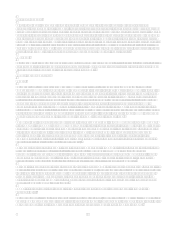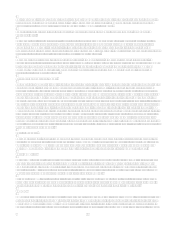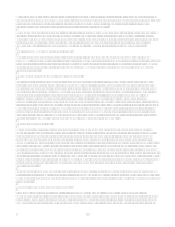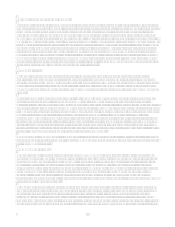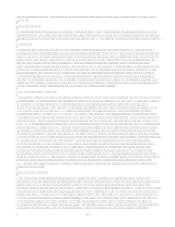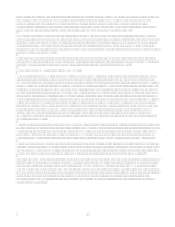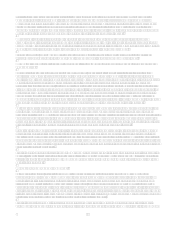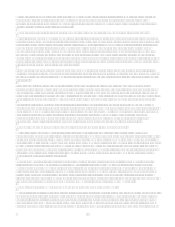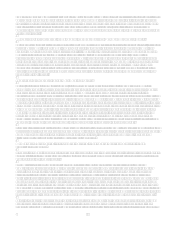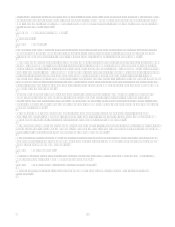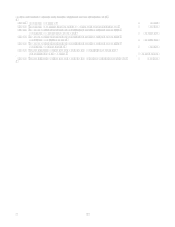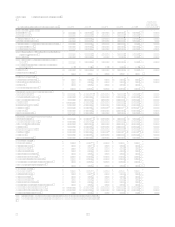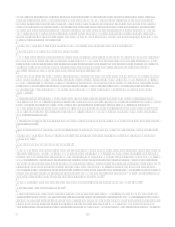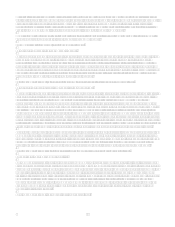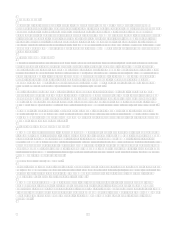Capital One 2006 Annual Report Download - page 39
Download and view the complete annual report
Please find page 39 of the 2006 Capital One annual report below. You can navigate through the pages in the report by either clicking on the pages listed below, or by using the keyword search tool below to find specific information within the annual report. 21
metropolitan area and Louisiana. The regional economic conditions in these areas affect the demand for our products and
services as well as the ability of our customers to repay loans and the value of the collateral securing these loans. A
significant decline in the general economic conditions in these regional economies could have a material adverse effect on
our financial condition and results of operations.
We Face Risk Related to the Strength of our Operational, Technological and Organizational Infrastructure
Our ability to grow and compete is dependent on our ability to build or acquire the necessary operational and technological
infrastructure and to manage the cost of that infrastructure while we expand and as we integrate acquired businesses. Similar
to other large corporations, in our case, operational risk can manifest itself in many ways, such as errors related to failed or
inadequate processes, faulty or disabled computer systems, fraud by employees or persons outside of Capital One and
exposure to external events. We are dependent on our operational infrastructure to help manage these risks. From time to
time, we may need to change or upgrade our technology infrastructure. We may experience disruption, and we may face
additional exposure to these risks during the course of making such changes. In addition, as we acquire other institutions, we
face additional challenges when integrating different operational platforms. Such integration efforts may be more disruptive
to the business and/or more costly than we anticipate.
In some cases, we outsource the maintenance and development of our operational and technological functionality to third
parties. These third parties may experience errors or disruptions that could adversely impact us and over which we may have
limited control. As we increase the amount of our infrastructure that we outsource to third parties, we increase our exposure
to this risk.
In addition, we are heavily dependent on the strength and capability of our technology systems which we use both to
interface with our customers and to manage our internal financial and other systems. Our ability to develop and deliver new
products that meet the needs of our existing customers and attract new ones depends on the functionality of our technology
systems. Our ability to develop and implement effective marketing campaigns also depends on our technology. Additionally,
our ability to run our business in compliance with applicable laws and regulations is dependent on these infrastructures.
Finally, in addition to maintaining a solid infrastructure platform, we are also dependent on recruiting management and
operations personnel with the experience to run an increasingly large and complex business. Although we take steps to retain
our existing management talent and recruit new talent as needed, we face a competitive market for such talent and there can
be no assurance that we will continue to be able to maintain and build a management team capable of running our
increasingly large and complex business. Also, we may acquire key personnel in connection with the acquisition of
businesses. While we strive to retain such personnel, there can be no assurance that we will be able to do so.
The Credit Card Industry Faces Increased Litigation Risks Relating to Industry Structure
We face risks from the outcomes of certain credit card industry litigation. Over the past several years, MasterCard
International and Visa U.S.A., Inc., as well as several of their member banks have been involved in several different lawsuits
challenging various practices of MasterCard and Visa and their member banks. In November 2004, American Express filed
an antitrust lawsuit against MasterCard and Visa and several member banks, alleging, among other things, that the defendants
implemented practices that prevented member banks from issuing American Express cards. The Corporation, the Bank and
the Savings Bank are named defendants in this lawsuit. Separately, a number of entities, each purporting to represent a class
of retail merchants, also have filed antitrust lawsuits against MasterCard, Visa and several member banks, including the
Corporation and certain of its subsidiaries.
Given the complexity of the issues raised by these lawsuits and the uncertainty regarding: (i) the outcome of these suits;
(ii) the likelihood and amount of any possible judgments; (iii) the likelihood, amount and validity of any claim against
MasterCard and Visas member banks, including us; (iv) changes in industry structure that may result from the suits; and
(v) the effects of these suits, in turn, on competition in the industry, member banks, as well as interchange and association
fees, we cannot determine at this time the long-term effects that these suits may have on us. For a full description of the
litigation risks that we face in connection with the structure of our industry, please refer to Industry Litigation on page 102 in
Item 8 Financial Statements and Supplementary DataNotes to the Financial StatementsNote 20.
We Face the Risk of a Complex and Changing Regulatory and Legal Environment
We operate in a heavily regulated industry and are therefore subject to a wide array of banking, consumer lending and deposit
laws and regulations that apply to almost every element of our business. Failure to comply with these laws and regulations
could result in financial, structural and operational penalties, including receivership. In addition, establishing systems and
processes to achieve compliance with these laws and regulations, may increase our costs and/or limit our ability to pursue
certain business opportunities. As our business grows in size and complexity, establishing systems and processes to achieve


